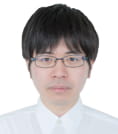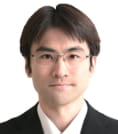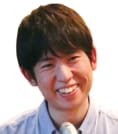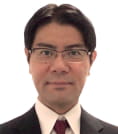- JST Home
- /
- Strategic Basic Research Programs
- /
 PRESTO
PRESTO- /
- project/
- Elucidating mathematical structures in real/virtual world objects and their utilization/
- [Math-Structure] Year Started : 2020
[Math-Structure] Year Started : 2020
Yusuke Imoto
Multi-resolution structural analysis system for cell differentiation
Grant No.:JPMJPR2021
Researcher
Yusuke Imoto

Associate professor
Institute for Advanced Study
Kyoto University
Outline
With the recent rapid development of biotechnology, a variety of genetic information has been converted into data, and key principles of life are being elucidated by the analysis of such data. In this study, we will develop a novel analysis system that extracts multi-resolution cell differentiation structures of cell populations and single cells from gene expression data to uncover the design principles of life. This system utilizes mathematical theories such as high-dimensional statistics, statistical causal discovery, topology, and dynamical systems from multiple perspectives.
Yusuke Kawamoto
Formal methods for statistical software
Grant No.:JPMJPR2022
Researcher
Yusuke Kawamoto

Senior Research Scientist
Department of Information Technology and Human Factors
National Institute of Advanced Industrial Science and Technology
Outline
Formal methods have been studied to provide mathematically rigorous techniques to verify the correctness of programs, and have been applied to the verification of various software. This project studies formal methods for verifying statistical software in a mathematically rigorous way. In particular, the project aims to develop techniques for the automated verification of statistical programs in order to improve the reliability of statistical software.
Ken’ichiro Tanaka
Study and application of approximate convexity in problems of optimal point configurations
Grant No.:JPMJPR2023
Researcher
Ken’ichiro Tanaka

Associate Professor
Graduate School of Information Science and Technology
The University of Tokyo
Outline
In mathematics, physics, informatics, etc., we are required to solve problems of finding “optimal” configurations of a finite number of points in regions in Euclidean spaces. For such problems, various optimization methods are considered in many cases. However, any general theory and algorithms for them have not been established. In this study, we provide mathematical foundation for these methods and find a viewpoint called “approximate convexity” unifying them to establish general theory and algorithms for problems of optimal point configurations.
Shuichi Hirahara
Frontiers of Computational Complexity Theory Based on Meta-Complexity View
Grant No.:JPMJPR2024
Researcher
Shuichi Hirahara

Associate Professor
National Institute of Informatics
Research Organization of Information and Systems
Outline
Meta-complexity refers to the complexity of problems asking for computational complexity (= resources needed to solve a problem). Examples of meta-complexity theoretic problems include the Minimum Circuit Size Problem and the problem of computing the time-bounded Kolmogorov complexity. Recently, meta-complexity has been widely studied and recognized as an important topic in complexity theory. In this research, we view computational complexity theory through the lens of meta-complexity theory, and aim to make progress on challenging open questions of complexity theory.
Takuya Funatomi
Multiplicative Sparse Modeling of Geometric Transformation Field
Grant No.:JPMJPR2025
Researcher
Takuya Funatomi

Associate professor
Graduate School of Science and Technology
Nara Institute of Science and Technology
Outline
This project aims to develop sparse modeling and visualization techniques for a geometric transformation field, which extends a vector field to have a geometric transformation at each point. Algebra on geometric transformations stands on multiplication, not addition. Therefore, the conventional techniques defined by addition are unsuitable for analyzing geometric transformation fields. Meanwhile, the sparse modeling techniques defined by multiplication can guarantee that the analysis result interprets as a geometric transformation.
Kazumitsu Maehara
Designing a data analysis framework to facilitate the qualitative understanding of biological systems
Grant No.:JPMJPR2026
Researcher
Kazumitsu Maehara

Assistant Professor
Medical Institute of Bioregulation
Kyushu University
Outline
In this project, I propose a data analysis framework by utilizing combinatorial Hodge decomposition as the key concept to obtain the qualitative understanding behind large scale data. I aim to obtain a qualitative interpretation of data through the structure of flows, a human-friendly concept using omics data measured biological systems at a molecule, cell, and tissue level.
Manabu Machida
Near infrared imaging by inverse series
Grant No.:JPMJPR2027
Researcher
Manabu Machida

Associate Professor
Faculty of Engineering
Kindai University
Outline
Near infrared imaging is an imaging modality without radiation exposure but with a compact device. In addition to medicine, the technology can potentially be utilized in different fields of science and engineering. However, its inverse problem to obtain tomographic images is nonlinear and moreover severely ill posed. My research focuses on this inverse problem. I will obtain high quality tomographic images by using the radiative transport equation without relying on the diffusion approximation and achieve a fast computation by making use of inverse series. Furthermore, I will establish a new data driven approach for the time series of successive measurements by exploring the inverse problem with the help of information science.
Hiroshi Morioka
Revealing dynamic functional organization of large-scale networks via nonlinear representation learning
Grant No.:JPMJPR2028
Researcher
Hiroshi Morioka

Research scientist
Center for Advanced Intelligence Project (AIP)
RIKEN
Outline
This project aims to reveal the unknown mechanisms underlying higher-order dynamic functions occasionally expressed in many types of large-scale networks. To that end, I develop a nonlinear representation learning framework applicable to large-scale network-structural time series, based on novel theoretical backgrounds, which extracts the hidden representation of the nonlinear network dynamics and the hidden factors organizing it in data-driven manner.
Toshihiro Yamada
New computational method for high dimensional PDEs using Malliavin calculus and deep learning
Grant No.:JPMJPR2029
Researcher
Toshihiro Yamada

Professor
Graduate School of Economics
Hitotsubashi University
Outline
The aim of this project is to develop new computational methods for high dimensional partial differential equations (PDEs) using higher order weak approximation of stochastic differential equations with Malliavin calculus and deep learning. Efficient numerical schemes will be provided for various linear and nonlinear PDEs and large scale simulation models.













